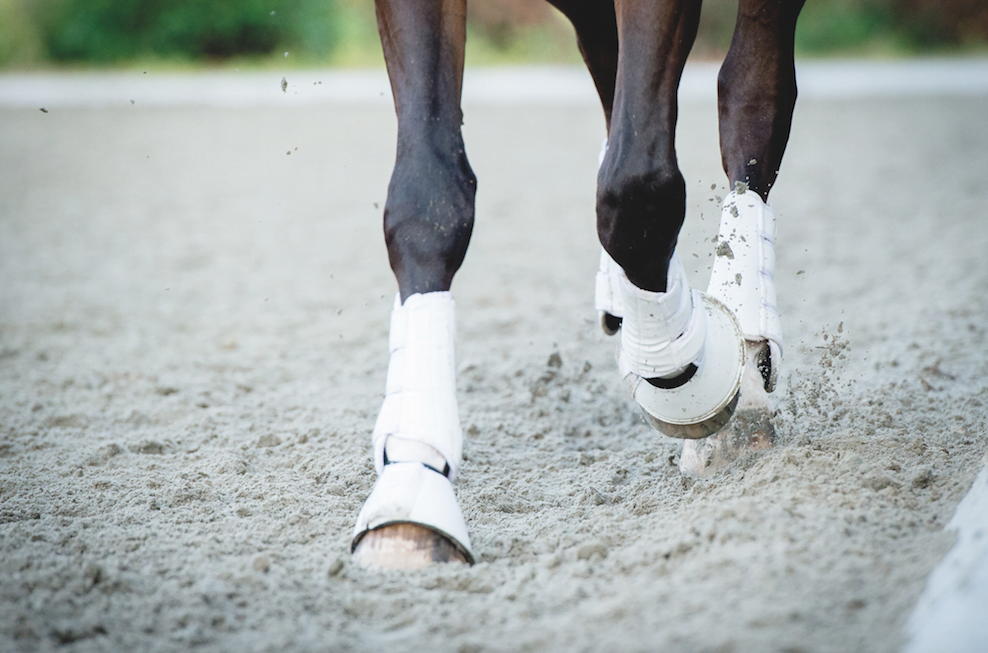Doctor Henk Offereins (DVM, MVSc) is a Dutch vet based in Ireland, who specialises in equine sports medicine. He visits South Africa regularly where he works in conjunction with Pretoria-based Dr Ingrid Cilliers to introduce new veterinary concepts that are currently in use in Europe and America to our competitive riders. His main focus is the prevention of injuries, and he spends time talking to the owners to establish the background of the horse before watching how the horse moves. He looks at the whole picture, including behaviour and behavioural changes, the rhythm of the horse’s movement, and how the injury is affecting the rest of the body, before focusing on possible injuries. Conformation also plays a role, as structural faults can put tendons and ligaments under increased pressure during high-performance work. A good attitude is essential so that the horse is willing to do what’s required of him.
Ultrasound tissue characterisation
Of the injuries that Henk sees, 50% are soft tissue-related, like tendon and ligament tears, and he brings with him to South Africa the most advanced diagnostic tool for scanning ligaments and tendons, the ultrasound tissue characterisation (UTC). This fully portable machine stores hundreds of images of the tendon, which can be seen as 3D colour images. It recognises different types of tissue within the tendon and provides detailed information about the nature and extent of tissue damage, as well as determining the quality of the tendon. Henk can then monitor how the tendon is healing and can adjust the horse’s rehabilitation programme accordingly. Because the UTC can identify weak areas in the tendon, injuries can also be prevented before they occur.
Below we see a comparison of UTC with conventional ultrasound, demonstrating the greater range of tissue types visualised by the UTC.
Recovery and rehabilitation

Rehabilitation is, of course, crucial to recovery from tendon and ligament injuries, which could otherwise end a performance horse’s career. Conventional treatment could last between nine and twelve months, starting with box rest, where your horse will suffer from extreme boredom and lose muscle fitness. This will be followed by a period of controlled exercise, where the playful horse is at risk of re-injuring himself. It is a slow and frustrating process, and not all horses recover fully.
EqueStride boot
Henk has introduced the revolutionary, fully adjustable EqueStride Tendon Support boot, which allows for a new and effective approach to optimal healing. It is made up of semi-rigid carbon fibre composite sheaths that enclose the metacarpal and proximal phalangeal regions. These are joined by a hinge joint that pivots concentrically with the horse’s MCP joint, and removes the need for box rest, as it enables the horse to move without risking further damage. It has different settings that control the range of motion in the joint, while allowing light loading of the tendon, stimulating collagen formation. As the tendon or suspensory ligament heals, mobility can be increased so that the horse may resume a normal workload. This reduces the formation of scar tissue, which lacks elasticity, and allows the cells in the area to adopt the properties of the cells in the ligaments and tendons. Correct use of the EqueStride boot can reduce the rehabilitation period to three months with minimal scarring, so that the tendon heals to its maximum potential.
Note: The EqueStride boot is available in South Africa, and the initial fitting should be done by a professional.

The equestrian community is a global one with high investments and much at stake, so optimal care of the competitive horse is of extreme importance. Those involved in the industry are willing to explore new technology and rehabilitation methods that had previously been used for humans in order to improve our horses’ performance and wellbeing. Dr Offereins works in South Africa with Dr Ingrid Cilliers, who owns the Canterbury Veterinary Practice, and travels the country to spread awareness of the latest technology. He also gives talks at Equifox on the new protocols in diagnosing, managing and rehabilitating equine tendon and muscular injuries.
Text: Jan Tucker
The full article appears in the November issue (116) of HQ > shop now

